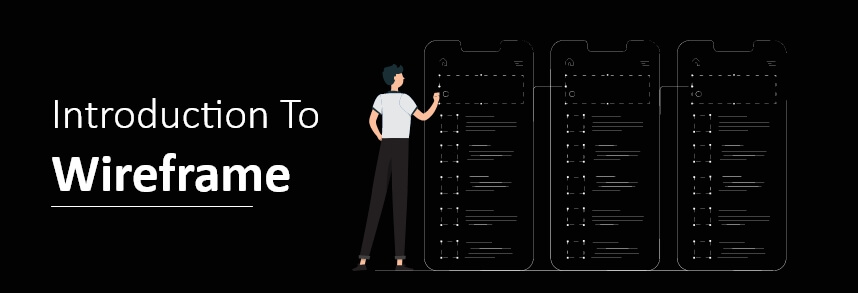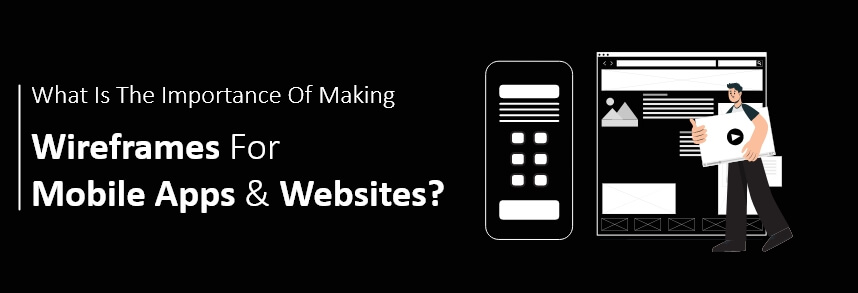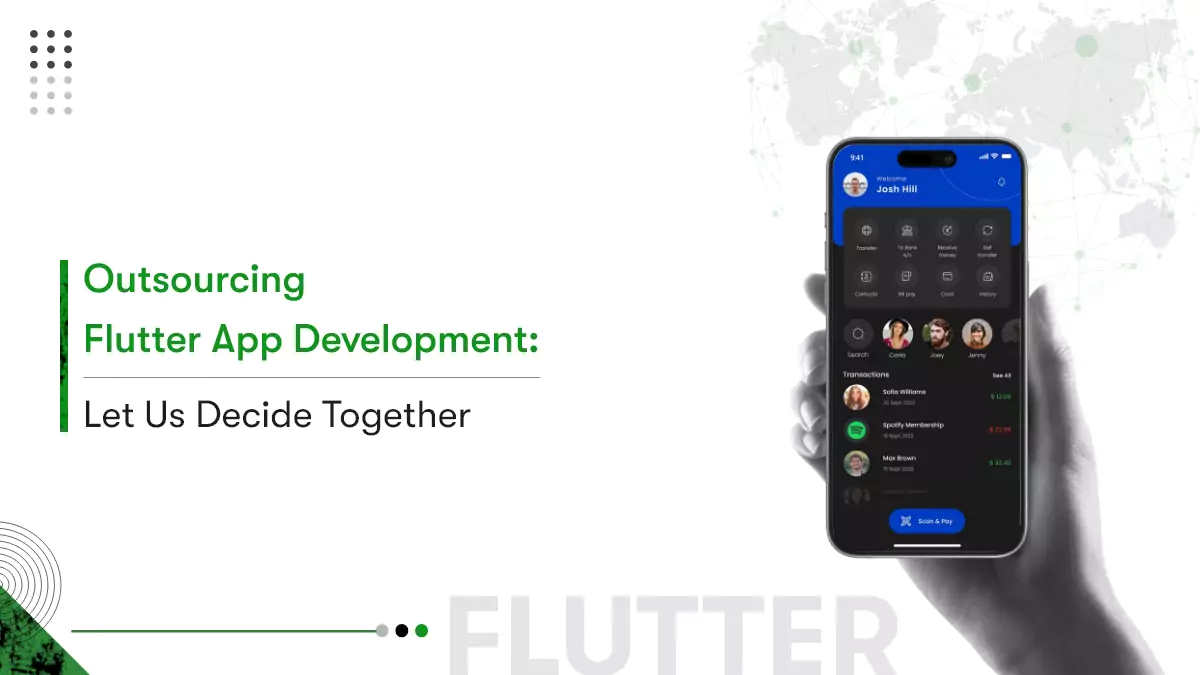I, Sanjay Kidecha, would like to continue our mobile app development process series of blogs. As you know, we have already discussed the first two primary stages of app development, Lean Canvas, and Product Requirements Document. I would now introduce you to another important concept of app development: Wire Frame. In simple words, I would say, a wireframe is a communication tool that defines the page’s interface and information hierarchy.
I would like to provide you with the index of our series for future reference.
-
- A Guide on Lean Canvas Model;
- How to Prepare a Product Requirement Document and its importance;
- Importance of Wireframe in Product development;
- A complete guide on selection of technology stack for startups;
- How prototyping helps businesses?
- A handbook to select development company for startups;
- A detailed guide on project management & delivery milestones;
- Role of Quality assurance in product development;
- Importance of User testing;
- Know where you should deploy your project?
- How Feedback and product iteration makes a difference in product development?
- What is the variation in the cost? What factors affect the variation?
- Why is a Good design the ultimate thing in the project?
- A Guide on Lean Canvas Model;
The wireframe communicates how a user will interact with the application. It is a schematic representation or a blueprint of the application’s visuals. In this article, I will give you a general introduction to wireframes and provide you with step-by-step instructions on how to design wireframes.
I am an avid reader, a quick learner, and an adapter. I have curated this article after reading many research articles and using my industry knowledge at its best. Also, this is our standard approach to wireframe creation. Still, if you have any questions, you can always contact me at my email address.
This article is divided into the following sections:
- Introduction to Wireframe;
- Importance of Wireframe;
- Who uses wireframe?
- Steps to design a wireframe
Let’s get started with the basics.

Introduction to Wireframe:
What is Wireframe?
A wireframe is a blueprint of a page. It lays an outline of the page structure, information hierarchy, and user flow through the application. App development is a lengthy process, and wireframing falls somewhere between low-fidelity sketches & interactive prototypes.
Traditionally, wireframes were hand-written using pen & paper, but today, various effective tools are available for its creation. A wireframe is a black-and-white schematic representation of the design and connecting pathways between multiple pages.
It allows you to lay down the positioning of buttons, arrows, menus, and more. More than anything else, wireframes are fast, cost-effective, iterable, and temporary. We say temporary here because it is a draft that may evolve as you move forward, gathering information and feedback from the team, & stakeholders. In a wireframe, you can define the aesthetic characteristics of the application’s key elements.
Well, you will never find a wireframe full of colors, graphics, or stylish fonts; however, it has high potential to connect designers, mobile app developers, stakeholders, and users on the same thread. The UX design team drafts the wireframe based on the user research performed by them. The two-dimensional representation or a usual guide simplifies the app development process.
To conclude, wireframing is outlining the application’s content and laying the foundation for future steps.
There are a few things that you need to remember before you initiate a wireframe. Make sure that you do not include these elements in your wireframe.
A rule of thumb to remember here is, a wireframe is as simple as possible. This is because the whole purpose of wireframing before app development is to align the process without complicating things. Suppose you add multiple colors or fancy fonts. In that case, the focus gets shifted, and one can not concentrate on the navigational elements.
- Avoid putting in multiple colors in the wireframe to make it pretty. Keep it either black & white or gray scales.
- Keep the fonts in a wireframe, regular, or use two-generic fonts, one serif, and other sans-serif. Do not fancy topography, even if you wish to distinguish the information. You can change the size of the font to “regular”, “italic”, or “bold” if you wish to highlight a particular part of the wireframe.
- Also, do not use heavy, stylish, or flashy graphics or images. You can use simple squares or rectangles with an “x” mark to suggest an image placement inside it. For positioning videos, you can use a triangle.
- Wireframing is an iterative process; hence, draft & draw a rough sketch to keep receiving the feedback. Do not invest much time behind the decoration.
- Be ready to accept criticism while you ask for feedback.
- Keep adding annotations and notes wherever required.
Now, why do UX designers use this approach of wireframing?

What is the importance of Designing a wireframe for mobile apps and websites?
A wireframe is a vital part of an app development process and, if skipped, may affect the planning of the process. It also affects the predefined functional Vs. non-functional requirement document that entrepreneurs prepare in advance.
Here are a few other reasons to use wireframes for your project.
- Wireframes are generally used to convince stakeholders and clients with the application’s idea. You can easily show them the site’s navigation and placement of various elements. You can show the clients how exactly you are planning your end goal and how each element will function on the application.
- Wireframes are important to have a clear idea of how your final product will look and feel. You can easily replicate the application’s transitions and create a logical flow.
- Wireframes are different from clickable prototypes and high-fidelity mockups in various ways. You can google or read articles to find out the difference between Prototypes Vs. Mockups Vs. Wireframes. Wireframes are easy to update and rework. You do not have to invest a lot of time and resources behind creating mobile app wireframes.
- A wireframe is a cost-effective solution that lays down the structure of the application. You can use this as a connection tool to engage with your clients. Without any distraction, your clients can focus on the structure and functionality of the project. They thoroughly understand the application and give their feedback.
- You get to know about the project flaws at an early stage of development. This way, you can eliminate the errors and release a flawless product.
- Wireframe allows you to prioritize content and set the hierarchy of the elements. You can easily detect which page will have space constraints, and which elements need to be shifted to another page.
- The wireframe shows how you will prioritize your application’s content. Along with this, wireframe shows space distribution, call-to-actions, feature & functionality placement, and screen navigation.
Hence you create a mind map and gauge a clear idea of how you are going to initiate the whole process. You can use it as a strong illustration of creating delightful products.
Who uses wireframes?
A wireframe is an open document accessible to each and every person involved in the app development process. It can be referred to at any point in time for a better understanding of the product. Here are the top categories for whom wireframe is like a blessing.
Project managers:
Project managers use this two-dimensional visual skeleton of the application to bring every member to the same table. Every member, including the client, is in consensus with the structure defined in the wireframe. Project managers ensure that the product reflected in a wireframe is exactly how it should be developed. A wireframe is like a checklist that helps the managers to keep track of progress.
Clients:
A client is here to judge the project, and a wireframe is like a convincing tool. A well defined and articulated wireframe shows the flow of the entire application, step by step. The client gets a chance to examine the interface flow and identify the error at a very initial stage. All important aspects are taken into consideration, which makes the process simpler and more manageable.
Designers:
A wireframe doesn’t need to be pixel-perfect but should be clear and easy to understand. The reason being, the designer team, relies on it completely. It acts as a guide when designers are crafting the user interface.
Developers:
A wireframe lets developers know the series of interactions and how they need to put together the screens. Developers refer to wireframes to understand the functionality and other elements of the application.
Now, let’s jump on to the next section; how to design a wireframe?
Steps to create a wireframe:
Wireframe creation is like solving the puzzle. You analyze and try to put together the pieces in the best way possible. You can draw sketches and kick-start the project. It is initiated using a pen & paper or by using a software tool.
Step 1: Do your research:
You need to do the groundwork of researching before you initiate the wireframe for websites or mobile apps. The basic research level includes defining the purpose of the application and the audience who will be using it. This exercise makes your basics clear, and you get to know what exactly you are planning to build.
You do not have to go into the nitty-gritty of details but need to elucidate every function and feature you plan to include. For performing this research exercise, you need to dig into the existing UX trends, understand the best practices, and review the design guidelines. Think about some out-of-the-box ideas that will help you stand out and impress your target user.
Also, suppose you do not have a professional team to vet the app idea at your mobile app development company . In that case, you can interview your friends, family, and the target audience. Approach them casually and inquire about their expectations, so that you can improve upon it.
Step 2: Prepare what you have researched:
It is difficult to remember all the insights that you have gathered during the research. You are likely to have qualitative data as well as quantitative data, and all of these you might need to refer to while preparing the wireframe.
Hence, I advise you to prepare a go-to sheet that includes the use cases, user goals, demanding features, and the targeted user personas. This way, you have your research references handy and can focus on the next steps.
Step 3: Map out target user flow:
If you skip this exercise, you will likely stuff the screen with multiple elements (some of which are of no use). Hence, you need to have a clear idea about the total number of screens and the user flow through them.
Defining the user flow is like a series to guide them to their desired end result. You need to have a full-proof strategy to utilize the marketing channel in the best way possible. Prioritize information architecture, so that a user is easily able to achieve the end goal.
You must keep the user flow linear and convenient. Ensure that the user doesn’t get frustrated passing through various screens and doesn’t drop-off the app.
To simply explain, mapping out user flow is like creating a flow chart. Sketch boxes and triangles, fill it up with functions, and define the flow using arrows.
However, while mapping out user flow, always remember to think from the user’s perspective. When you toggle between various screens, determine the purpose of this screen and how it will help the user reach the end goal. If you can answer the above two questions, you are halfway through the wireframe creation.
Step 4: Pick up the right tool:
As mentioned above, wireframe creation is easy and cost-effective. But looking at the competitive scenarios, entrepreneurs are jumping on to digital tools for wireframe creation. The primary reason for digitization is to ensure that the doc is not lost or deleted and remains easily accessible.
There are numerous free tools available that will assist you in creating wireframe examples. This list is not exclusive, and you can definitely have other options available on the internet. Our pick up tools are InVision, Sketch, Balsamiq Wireframes, Mockflow, and Wireframe.cc. You can ask our expert team for further guidance on wireframe tools.
Step 5: Start drafting:
It might take a while to come up finally to this stage of drafting the wireframe, but the end results are quite satisfying. Go through each screen meticulously and define the core features of that particular screen.
You have to outline the application idea, but do not go into fine details. Focus on each block, think of the content prioritization and detailed information. Analyze which prominent information should appear when the user lands on the screen. What would they expect to see, and how will you navigate them to the next page?
You may try variations in screens or play around with them; however, sit with your team and ask their feedback to finalize a single screen that would look convincing.
Step 6: Start testing the wireframe:
So you have put in your best efforts to create an impressive, user-centric app wireframe, and the next step is to take it forward to prototype mode. The next step is to upgrade your work and create a prototype that naturally connects the elements.
Prototyping allows you to add images, buttons, drop-down menus, navigation, and more. It is a vital part of ensuring a successful app delivery.
Above mentioned are some of the general practices to prepare a wireframe.
However, there is a difference in the approach when you are planning a wireframe for mobile applications and websites. Let’s look at these differences.
For mobile applications:
- A mobile application is developed, keeping in mind the OS you target. And hence, right at the initial stage of wireframing, you can draft a wireframe for both iOS and Android. For drafting wireframes for mobile applications, you need to know the industry standards tap target sizing. You can refer to Google’s guide on tap target sizing, which has become a norm today. Complying with these standards meticulously is because you can develop a wireframe that fits within these platforms.
- Along with the tap target size, you have limitations when it comes to the mobile application’s screen size. A wireframe is a visual representation of the user interface; you may feel space constraints while planning a wireframe for mobile devices. Therefore, you need to ensure that the wireframe design doesn’t look cluttered, has minimal elements, and defined navigation.
- You need to define specific gestures when you are planning a wireframe for mobile applications. Consider how users will interact with the screen, how long they will stay, what push notifications to send, and what permissions they should grant while using the applications. You need to decide every single interaction that would encourage user engagement.
For websites:
Let’s look at what you need to take care of while planning a wireframe for websites.
- Browsing on websites is a way different from that of applications. Website browsing is more about following the information and navigating through pages as guided. Hence, while crafting a wireframe, you need to decide the message and user flow of each screen page. Also, concentrate on microcopy ( tiny tidbits of information on how a user should flow and behave).
- The next step to wireframing for websites is getting into the details. Define the layout, spacing, usability conventions, tagline, etc. Also, focus on information hierarchy so that you can attract maximum users. By defining this, you will get to know which elements you need to place where.
- Users are likely to switch between the screens; first, they might open the app on mobile devices, later, can shift to websites. Also, they may come across the website content over social media platforms using which they will land up on the website. Therefore, you need to keep a check on the layouts you decide for the wireframe. Consider multimodality while planning website wireframes. If you make the wrong choices, a website’s layout may break when you open it over mobile devices.
In both the approaches, wireframes for mobile apps and websites, the last step is to test your wireframes. Develop an interactive wireframe that connects the screen naturally and gives you a genuine overview of points of friction, and let’s you decipher the screen as per expectations. A perfectly designed user-centric wireframe doesn’t hurt the brand’s reputation. It allows you to keep track of the proceedings.
Final words:
Simplicity is key when it comes to wireframe designing. Define every single element of the screen, map out user flow, and represent information in a way that it aligns with the end goal. Wireframing is a crucial part of app designing. Hence, you need to invest time and have a concrete understanding of core features.
Wireframing gives you better clarity and lets you look into the details objectively. The ultimate goal of wireframing is to lay down a flawless, intuitive, and functional product that has the potential to engage users. Additionally, it encourages the team members to work collaboratively towards the end goal. The wireframe is lightweight and comprehensive. It can serve as a reference guide while designing the end product.
I hope this article serves the purpose and makes everyone comfortable with the concept. I am sure that wireframing your app idea will give you tangible end results. Stay tuned for the next blog of the sequence on tech stack selection for startups.












 Contact Information
Contact Information